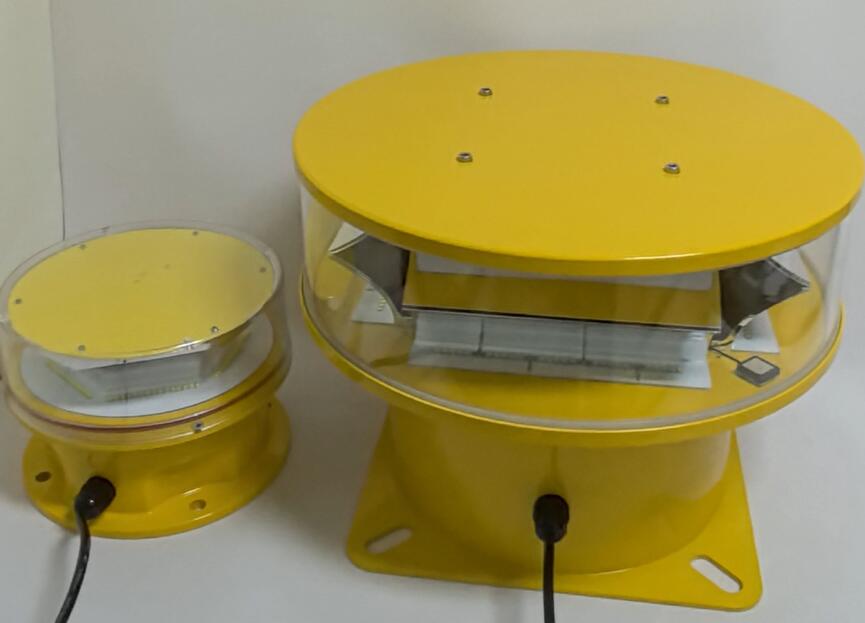The Vital Role of Aviation Lights for Tower Cranes in Construction Safety
In the modern construction landscape, tower cranes stand as colossal giants, reaching towards the sky to facilitate the erection of tall structures. Amidst their imposing presence, one crucial element often overlooked by the casual eye yet of utmost significance is the aviation light for tower crane. These lights are not just mere accessories; they are the guardians that ensure the safety of both air and ground operations.
The Need for Aviation Lights on Tower Cranes
Tower cranes, with their great height and often extensive reach, pose a significant risk to aviation. In urban areas and near airports, the airspace is a busy thoroughfare for various aircraft, including helicopters, small planes, and even drones. Without proper lighting, these cranes can become invisible obstacles during low - light conditions such as at dawn, dusk, or during the night. Aviation lights on tower cranes serve as visual cues for pilots, alerting them to the presence of these massive structures well in advance.
The Federal Aviation Administration (FAA) and similar regulatory bodies around the world have strict regulations regarding the installation and operation of these lights. These regulations are based on the principle of preventing potential collisions between aircraft and tower cranes. The height and location of the cranes determine the type and intensity of the aviation lights required. For example, taller cranes may need more powerful lights with a wider range of visibility.

Types of Aviation Lights for Tower Cranes
There are several types of aviation lights used on tower cranes. One of the most common is the red obstruction light. Red is a universally recognized color for danger and warning in the aviation industry. These lights are usually installed at the top of the crane's boom and other high - risk areas. They are designed to be highly visible from a significant distance, even in adverse weather conditions. The intensity of red obstruction lights is carefully calibrated to ensure that they are not too bright to cause glare for pilots but bright enough to be clearly seen.
| Aviation Lights for Tower Cranes | 56TYG |
Another type is the white strobe light. Strobe lights are highly effective in attracting attention due to their intermittent flashing pattern. They are often used in conjunction with red obstruction lights. White strobe lights can be seen from a greater distance compared to steady - burning lights, making them ideal for use in areas with high air traffic density. In some cases, tower cranes may also be equipped with dual - color lights that can switch between red and white depending on specific operational requirements or to enhance visibility under different lighting conditions.
Installation and Maintenance of Aviation Lights
Proper installation of aviation lights on tower cranes is a critical process. The lights must be securely mounted to withstand the vibrations and movements of the crane during operation. The wiring of the lights should be protected from environmental factors such as rain, wind, and extreme temperatures. Installation should be carried out by trained professionals who are familiar with both the crane's structure and the requirements of aviation lighting systems.
Maintenance of these lights is equally important. Regular inspections should be conducted to check for any damage to the lights, such as cracked lenses or burned - out bulbs. The power supply to the lights should also be monitored to ensure continuous operation. In case of any malfunction, prompt repair or replacement of the affected components is necessary. A well - maintained lighting system is essential for the safety of the airspace around the tower crane.
Impact on Construction Projects
The presence of proper aviation lights on tower cranes has a significant impact on construction projects. From a safety perspective, it reduces the risk of accidents involving aircraft, which could have disastrous consequences. In addition to potential loss of life and damage to the aircraft, an accident could also lead to severe disruptions in the construction process. Lawsuits and financial liabilities associated with such accidents can be astronomical, making the investment in high - quality aviation lights a cost - effective measure in the long run.
Moreover, compliance with aviation lighting regulations ensures that construction projects can proceed without any legal issues related to airspace safety. This allows for smoother progress of the project and helps in maintaining a good relationship with local aviation authorities. It also enhances the reputation of the construction company as a responsible and safety - conscious entity.
Technological Advancements in Aviation Lights for Tower Cranes
The field of aviation lights for tower cranes has seen continuous technological advancements. LED lights have become increasingly popular due to their energy - efficiency, long lifespan, and high brightness. LEDs can provide more consistent illumination compared to traditional incandescent bulbs. They also require less power, which can be beneficial in situations where the crane's power supply is limited.
Some modern aviation lights are equipped with smart features such as remote monitoring and control. This allows construction site managers to monitor the status of the lights in real - time from a central control station. They can receive alerts in case of any malfunctions and even control the on/off status or intensity of the lights remotely. This not only improves the efficiency of maintenance but also ensures that the lights are always in optimal working condition.
In conclusion, aviation lights for tower cranes are an integral part of modern construction safety. Their proper installation, maintenance, and use are essential for preventing potential disasters in the airspace around construction sites. With continuous technological improvements, these lights are becoming more effective and reliable, further enhancing the safety and efficiency of construction projects involving tower cranes. Construction companies must prioritize the use of high - quality aviation lights to ensure the well - being of both the workers on the ground and the pilots in the air.
